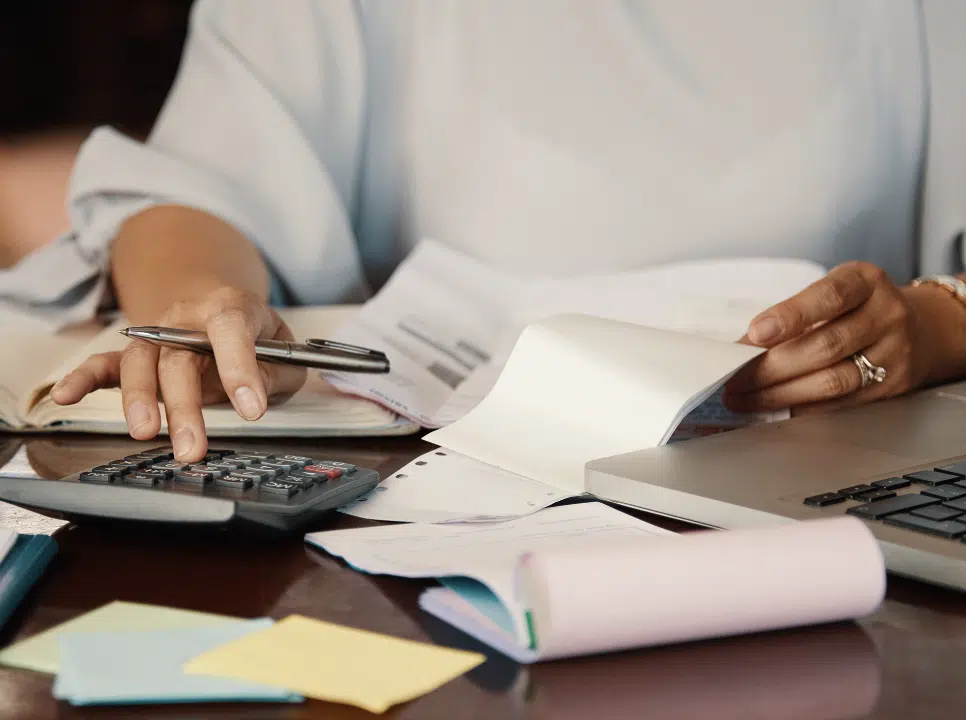Springtime is when we go all Marie Kondo on our homes, tidying up the messes to spark more joyful living. But when’s the last time you got your financial house in order? Spring cleaning our money matters should be right up there with cleaning out the closets – something we do at least once a year.
Taking a few simple steps to sort out our accounts, paperwork, habits and goals can do wonders for our financial wellbeing. And maybe even keep more money in our pockets (talk about sparking joy!).

Keep scrolling for our simple guide to decluttering your finances.
Terms to Know
Time Value of Money
The concept that a “dollar today is worth more than a dollar tomorrow” because money you have today can be invested and potentially grow into a larger amount in the future.
Permanent Documents
Personal records or financial documents that you need to keep indefinitely. This includes birth and marriage certificates, divorce papers, mortgages, deeds, bills of sale, social security cards and IRA contributions. Store somewhere safe like a fireproof box or safety deposit box at your bank.
Temporary Records
Materials you can dispose of after a designated amount of time (usually 7 years or less, depending on the document.) Think bank statements, tax returns, vehicle and title registrations, property tax assessments and loan agreements.
Escheatment
Escheat is a government’s right to take ownership of unclaimed assets, property, or dormant accounts after a prolonged period or when you pass away. You can protect your investments and insurance policies from escheatment by checking that all your accounts have beneficiaries, up-to-date contact info and a current address.
Tidy up Your Finances in 4 Steps
Any good cleaning starts with gathering our supplies. In this case, that means compiling all your financial info – bank statements, credit card bills, pay stubs, receipts – anything that shows how you earn and spend money. We can’t clean up our messes if we can’t see them clearly. So be sure to assemble a full picture of your current financial state.
Step 1: Straighten
Setting your affairs straight and getting organized
Give your budget a good dust off. Review your income and expenses for the last few months to see if it all balances out. Ask yourself if you’re saving enough – for a rainy day, the unexpected, retirement. Assess whether your spending habits line up with what’s in your paycheck.
Organize paperwork. The piles on your desk aren’t going to sort themselves. Spend time sifting through old bills, credit cards and bank statements and decide what to keep or toss. File receipts for tax time and while you’re there, purge your file cabinet of income tax statements older than 7 years.
Close out old subscriptions. Are you paying for apps, streaming services or software you no longer use? Check your credit card statement in case you forgot to click cancel. Try downloading Mint.com for free.
Update older accounts like 401K’s and insurance policies with your current email, mailing address, and chosen beneficiary to ensure they don’t get escheated to the state (or worse, inherited by an ex 😜).
Step 2: Wipe
As in, cleaning up your credit score and wiping away debt
Review your credit report and be on the lookout for potential identity theft, such as a credit card that might have been opened in your name without your knowledge. Make sure all the information in your report is correct and up to date and be sure to dispute any errors you find. By Federal Law, you’re entitled to a free copy of your credit report every 12 months from each of the three report reporting agencies. Get your report here.
Your credit score is a big factor in your financial health. To stay on top of potential changes, consider signing up for a credit monitoring service. Some banks and credit card companies even provide this for free to their customers.
Any debts you may have been robbing you of income so work to pay down outstanding loans or credit you may owe. We’re fans of the “snowball method” to help you stay motivated and feel successful. With this strategy, you pay off the smallest of all your loans as quickly as you can. Once that debt is paid off, take the payment you were making and apply it to the next-smallest debt. Keep going in this manner until you’ve got a clean slate.
If you’re paying an annual fee on a card you don’t use, ask your credit card company if it can keep the account open while downgrading you to another card with no annual fee.
Step 3: Cleanse
Detoxing financial habits, breaking bad behaviors and finding new ways to save
One easy behavior you can adopt is to check in annually with your service providers and see where you might be able to cut costs. Look at cable, internet, phone bills, streaming services and insurance policies and compare competitors’ rates. You may be able to save money if you switch carriers or get on the phone to renegotiate those plans or premiums for a better price.
For bigger gains, clean up your habits and get more thoughtful about how you spend. Financial guru Dave Ramsey says that personal finance is 20% knowledge and 80% behavior. Taking the time to understand your money mindset is a great jumping off point to change it, so you can make smarter decisions that better benefit your goals. Go here for a great read that breaks down the psychology of money.

Miller Hoffman packs his own lunches. Depending on your habits, you can save $250 a week by brown bagging it instead of eating out or ordering Uber Eats.

Mike Manganillo buys generic items instead of brand names and curbs impulse buying by deleting shopping apps from his phone.

Tim Whitney recommends reconsidering “Covid conveniences” like grocery delivery that you no longer need to rely on regularly.

Stephanie Williams spends “free” time with friends. Instead of meeting up at a bar, opt for activities that cost less like meeting up for a hike or hanging at your home.
Step 4: Shred
Literally! Take your toss-pile from Step 1 and permanently lighten your load
Find a safe place to destroy old records and receipts, box ‘em up and bring ‘em!
Many banks or townships host annual shredding days, where you can bring your confidential documents, for them to shred on location in a mobile shredding truck.
Check your municipalities’ website to see when the next one is scheduled.
Be sure to remove binder clips, and check what the limit is for how many pounds you can bring.
Deeper Dive

Below are even more ways to dig in for a deep clean:
You know that feeling you get after you’ve just scrubbed your whole house? Accomplished and was pleased to see how tidy everything looks (and smells!). Finishing a financial spring cleaning feels like that times ten. Of course, it’s rewarding mentally, having your money matters in order. But it can also be rewarding for your wallet – like finding coins in the couch cushions – but even better when you find ways to make your money work better.
Once that’s done, go out and spend time in the spring weather.
Onwards with Optimism, The TradeWinds team
—
Have a friend or colleague who you think would be interested in Money Courage? They can sign up here.


